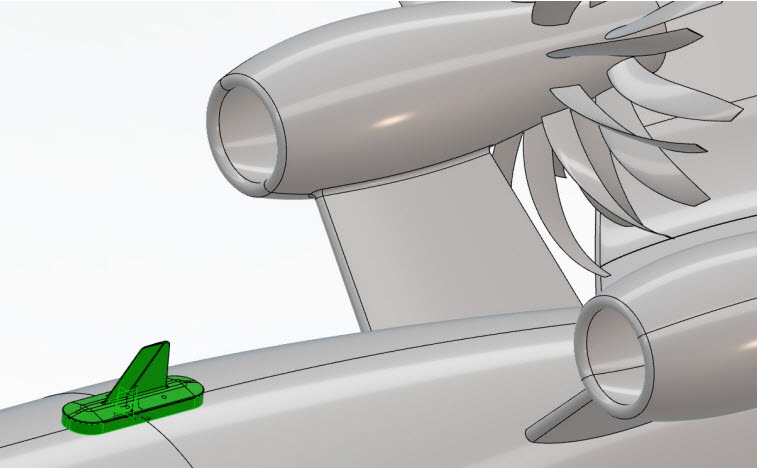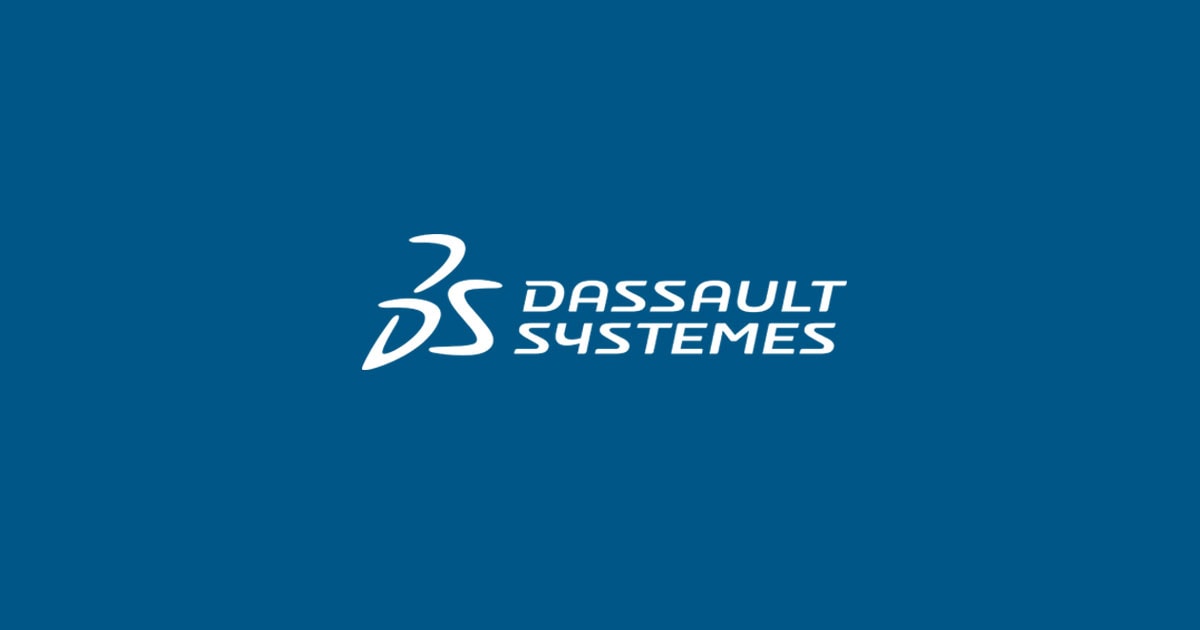This post is a continuation in a series about simulation on the 3DEXPERIENCE platform and some of the roles you can find there. This week we are focusing on the Antenna Placement Electromagnetics Engineer role and how it can help antenna system integrators and simulation specialists to collaborate on the assessment and validation of installed antenna performance.
Executive Summary
The correct placement of antennas can make or break a system when installed on a vehicle, aircraft, ship, or structure. Communication systems such as radio, WIFI, cell networks, and satellite links as well as sensor systems such as radar, guidance, and collision avoidance all rely on antennas to function. However, the surroundings of the antenna can reflect or obstruct waves and affect its performance.
With multiple antennas competing for limited space, antenna placement can be a difficult problem, especially when trade-offs must be made with other design considerations such as aerodynamics. The Antenna Placement app on the 3DEXPERIENCE® platform helps engineers find the best antenna placement early in the design process, without having to test a physical prototype. This saves time and money by accelerating product engineering and reducing the risk of problems arising later in the development cycle. The app allows simulation to be used directly on the
CAD model, without the need for detailed model preparation or significant simulation expertise. Designers can experiment more and use simulation results to find optimal antenna configurations than would not be possible to find using traditional design methods. SIMULIA CST Studio Suite simulation technology is used to validate the electromagnetic antenna performance.
Thanks to the integration with 3DEXPERIENCE®, app users benefit from seamless collaboration workflows among designers, and electronic and mechanical engineers using a model-based—as opposed to file-based—approach and allow them to make necessary changes to the product quickly, improving the engineering efficiency and further boosting innovation.
Antenna Placement Engineering: Challenges Increase as Integrated Systems Become the Norm
When choosing an antenna, its datasheet will include properties such as gain and directivity as well as the radiation pattern in free space. However, when it is installed its properties can diverge drastically from these nominal values. Metal structures, such as the body of a car, the fuselage of an aircraft, or the tower of a cell base station, can reflect and block electromagnetic waves and distort the radiation pattern. This can mean that a radio system that appeared to meet the specifications during design will unexpectedly fail certification.
Ideally, this risk would be minimized by placing the antenna somewhere with no obstructions nearby—this is not always possible for real structures. Other design considerations such as moving parts, weight and aerodynamics limit the number of places where an antenna can be placed. Furthermore, there may be dozens of antennas competing for space—not only do these antennas all need to be placed, but interference between them should be avoided.
Before simulation, the traditional antenna placement process involved a mixture of wide design margins, trial and error, and experience. Potential problems would often not be identified until full-scale prototypes were constructed, and correcting the issues would be expensive and time-consuming. With the digital revolution and the increasing number of integrated antenna systems, this is no longer feasible, and electromagnetic simulation has become an essential tool for
systems integrators in industries such as aerospace, defense, automotive, transportation, and telecommunications.
Fast, accurate simulation requires powerful software and hardware and a considerable amount of expertise. For decades, this has been the domain of simulation experts who were largely siloed away from the rest of the development team. Now, however, this is all changing. Simulation is increasingly being integrated directly with design tools, making product development collaborative and democratic. The Antenna Placement app brings SIMULIA CST Studio Suite to designers using the 3DEXPERIENCE® platform, giving antenna installers the tools they need to
validate performance and optimize placement location without the need for complicated model setup or deep simulation knowledge.
Benefits of the SIMULIA Antenna Placement App

Using simulation to analyze antenna installed performance and find the best placement both accelerates design and cuts risk. Antenna placement can be analyzed much earlier in the development cycle, before committing to constructing a prototype for testing. Problems that are identified can be quickly resolved and more configurations can be tested before the final design decision is made.
The SIMULIA Antenna Placement app offers a more streamlined workflow than other simulation solutions, accelerating the analysis process. The app is built on the electromagnetic solver technology of SIMULIA CST Studio Suite, a long-established simulation package widely used in many leading companies, and combines it with design tools from CATIA, a standard CAD tool in many industries including aerospace, automotive, and transportation. Because design and simulation are linked together on the Dassault Systèmes 3DEXPERIENCE platform, the learning curve is shortened. Design engineers can get started without having to be experts in electromagnetic simulation. The integration of design and simulation—both electromagnetics and other domains such as structures and aerodynamics—on a common platform also breaks down the silos between the teams. Designers, engineers, and systems integrators can work together and share ideas. This opens the possibility for new, innovative solutions that allow antennas to be integrated on the platform without compromising on properties such as aerodynamics.
As the results of the simulation are available on the 3DEXPERIENCE platform, they can be easily used into a dashboard for reports to managers and decision-makers. 2D and 3D simulation results help to communicate to designers and managers exactly the advantages of different antenna locations in an intuitive, easy-to-understand way. Since SIMULIA physical review apps are web-based, the results can be accessed from any kind of computer or mobile device, without the need to have CST Studio Suite installed. The app also allows simulation to be integrated
into lifecycle and variant management tools from the Dassault Systèmes brand ENOVIA, and to connect them to corporate requirements.
Example Workflow
The Antenna Placement app is well suited for any application where an antenna needs to be placed on a large platform. This example will discuss mounting an antenna on an aircraft, but the same workflow would also apply to a car, a ship, or a factory to design an indoor network. When designing the VHF antenna link for an airliner, the antenna for uplink/downlink needs to be placed where it has an unobstructed view of the receiver whatever the angle of flight. It will be competing for space with structures such as the tail, and with mechanical parts, lights, air intakes, and other antennas.

The first task, therefore, is to identify a few candidate locations. In some cases, there may also be multiple antenna designs to compare as well or a radome around the antenna. The CATIA model of the aircraft and the simulation models of the antennas are opened in the SIMULIA Antenna Placement app. If the antenna model is not available from the manufacturer, a simulation model can be produced with the Antenna Magus tool. The app opens a simulation project with a master template, with appropriate solver and mesh settings already set up. The user marks antenna locations on the model with an intuitive 3D interface, and a first quick simulation shows how the antenna is obstructed in each location.

If there are no signs of obstruction, the next step is a full-wave simulation. This simulates the electromagnetic fields around the antenna in 3D. Details of the materials, such as carbon fiber composites, layered radomes, and mesh or foil shielding, can affect wave propagation and can be taken into account by the simulation.
The results of this simulation include all the key performance indicators (KPIs) such as total radiated power (TRP), efficiency, directivity, gain, and axial ratio, as well as the far-field radiation pattern in graphical format. The different antenna placements can be easily compared in the Performance Trade-Off table to find the best configuration for the application, and the candidates are automatically ranked. Different far-field cuts can be checked to ensure there are no obstructions or excessive side lobes. When there are multiple antennas on a platform, co-site interference between them can also be analyzed to identify and mitigate potential issues, leveraging the best-in-class SIMULIA CST Studio Suite.

Conclusion
The location of antenna placement can have a major impact on their performance. Finding the optimal placement means making trade-offs between multiple different antennas all competing for space on the same vehicle.
The SIMULIA Antenna Placement app combines electromagnetic simulation with CAD design and offers an automated workflow for antenna installed performance analysis. Designers and system integrators can model different antenna configurations and compare KPIs to find the best antenna placements for their needs. Antenna placement simulation with the SIMULIA Antenna Placement app cuts design time and costs, especially when used early in the development process. It also reduces the risk of antenna systems failing to meet specifications or seeing interference issues. The app supports collaboration between designers, simulation experts, and systems integrators to facilitate
knowledge sharing between departments and allow users outside the conventional simulation specialties to use it in their work.
SIMULIA offers an advanced simulation product portfolio, including Abaqus, Isight, fe-safe, Tosca, Simpoe-Mold, SIMPACK, CST Studio Suite, XFlow, PowerFLOW, and more. The SIMULIA Community is the place to find the latest resources for SIMULIA software and to collaborate with other users. The key that unlocks the door of innovative thinking and knowledge building, the SIMULIA Community provides you with the tools you need to expand your knowledge, whenever and wherever.



